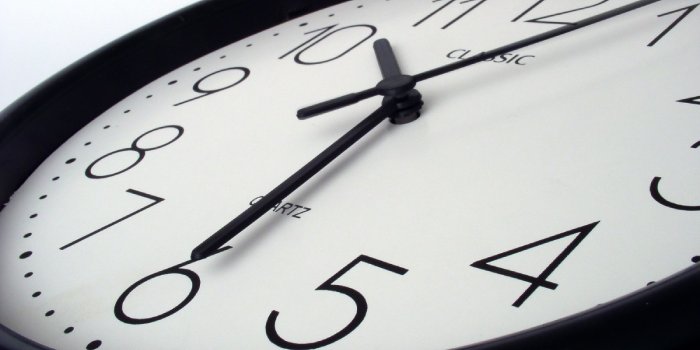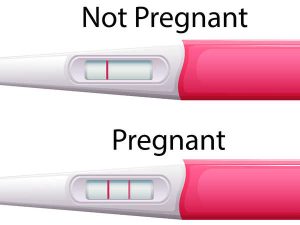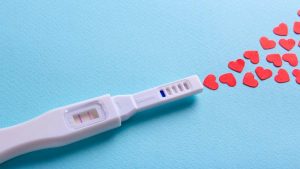What are ovulation test kits (OPK)?
Ovulation test kits or ovulation predictor kits (OPKs) are at-home tests you can use to determine when you’re ovulating. Because you’re most fertile during ovulation, the kits can help increase your chances for success when you’re trying to conceive.
Ovulation kit will help you find out when you are ovulating. This simple guide will help you learn how to use ovulation tests correctly.
Ovulation test lets you know when you are most fertile and when your next period will arrive. Ovulation occurs 10–16 days (average of 14 days) before your period begins.
Using ovulation tests to track your fertile window is not a good way to keep from getting pregnant. Ovulation tests identify the surge in luteinizing hormone up to 24 to 36 hours before ovulation, but sperm can survive in the body for three to seven days. If you have sex before you discover the surge in luteinizing hormone, the egg could still be fertilized.
One way to predict ovulation is to use home tests. These tests react to the luteinizing hormone in urine, which starts increasing 35–44 hours before and peaks 10–12 hours before the egg is released.
Tips for using ovulation test kits (OPK)
- You should start taking tests several days before you expect to be ovulating. In a regular 28-day cycle, ovulation will usually be on day 11 or 12.
- Continue taking the tests until the result is positive.
- It is better to do the tests twice a day. Don’t take the test during your first pee of the morning.
- Before taking a test, don’t drink a lot of water (this can dilute the test). Make sure not to urinate for about four hours before taking the test.
- Follow the instructions closely.
- Most ovulation tests include a booklet that will help you interpret the results. A positive result means that ovulation is likely to occur in 12–36 hours.
To best determine your fertile days, you can also measure your basal temperature and cervical mucus. Doctors can also track ovulation using an ultrasound.
Luteinizing hormone, which is detected in the urine shortly before ovulation, peaks for different amounts of time and levels in different people.
Sometimes, the peak time of the luteinizing hormone is short and lasts only a couple of hours. To make sure you don’t miss the surge of the hormone, it may be helpful to take the test twice a day at the same time.
If the peak time is long (more than 24 hours), one test is enough to indicate an increased level of the hormone.
Ovulation tests that react to the luteinizing hormone are usually done a few days before the expected ovulation.
In a regular cycle, the timing will look like the following:
- The menstrual cycle is 28 days.
- The luteal phase (from ovulation to menstruation) is fairly stable and lasts 12–14 days.
- The beginning of testing will be three days before ovulation.
For a 28-day cycle, 3 days before ovulation will typically be around day 11 of your cycle. To do the math, start at the end of your cycle (day 28 and the end of your luteal phase) and work backward towards the start. The first day of your cycle is the first day of your most recent period.
Irregular cycles can make the timing a bit more complicated. For an irregular cycle, the best option is to look at your shortest cycle in the last six months. Use this information to calculate your current cycle.
For example, if your shortest cycle was 21 days, you could expect ovulation to begin on day 7. Even in an irregular cycle, your luteal phase is relatively stable and lasts for about 14 days. Starting at the end of your cycle (day 21) and subtracting the 14 days of your luteal phase, you end up at day 7 for predicted ovulation. Start doing tests 3 days before that, on the 4th day of your cycle.
Ovulation tests can also help you identify the length of your luteal phase if it lasts more or less than 14 days.
Ovulation tests indicate the presence of the luteinizing hormone in the urine. Within 12–36 hours after the level rises, a follicle ruptures, an egg is released, and ovulation takes place.
However, this process can sometimes fail.
Several reasons why an ovulation test may be inaccurate
- For someone with polycystic ovaries, a test may mark the surge of luteinizing hormone, but ovulation may be absent.
- With luteinization of an unruptured follicle, the level of luteinizing hormone is enough to be detected by a test, but the egg does not leave the ovary.
- If there are abnormalities in the hypothalamus, luteinizing hormone production malfunctions. The hormone level may be high, but ovulation does not occur.
To determine when ovulation is approaching, it’s a good idea to apply a combination of methods. Take ovulation tests, measure your basal body temperature, and monitor changes in cervical mucus.
Nowadays, there is a great variety of ovulation tests. They mainly differ in price, accuracy, parameters for determining approaching ovulation, and convenience.
The most common ovulation tests consist of strips and digital devices that detect the rise in the level of luteinizing hormone in the urine. They look like pregnancy tests.
Most home ovulation tests are based on detecting a surge of luteinizing hormone in urine, which occurs 12 to 36 hours before an egg is released from its follicle. There are also test systems that can indicate increased levels of estrone-3-glucuronide (E3G) in the urine.
A positive test result indicates a luteinizing hormone surge, and ovulation should occur in the next 12 to 36 hours. However, this may not be the case for everyone.
A positive ovulation test represents your best opportunity to get pregnant. If you are unsure of the result, read the booklet that is included with the ovulation kit.
A negative ovulation test means you are not having a luteinizing hormone surge, and ovulation has not occurred. If you are unsure about the results, consult the booklet included with the test.
Reasons for LH test negative results:
- You used first-morning urine.
- The concentration of luteinizing hormone was too low to detect.
- Testing was too early or too late in the menstrual cycle.
Predicting the luteinizing hormone surge can be tricky, so don’t worry if you get a negative ovulation test result. It may have come earlier than planned.
For the most accurate result, doctors suggest testing twice a day, 10 hours or more apart, for a few days prior to ovulation.
Log your ovulation test results to use them to make even more accurate predictions.
The ovulation test can be negative for the following reasons:
- The peak time of the luteinizing hormone is short, and you missed it (that is why you should do tests twice a day).
- In some cycles, ovulation does not occur because of stress, intense physical activity, sudden weight changes, or unusual climate.
- With long cycles, you may have taken a test too early. You should start taking them 17 days before your expected period or 3 days before potential ovulation. Continue until the result is positive.
- The test has been performed incorrectly. For example, your urine was diluted, or you did not follow the instructions.
Be patient and record the test results for at least three cycles.





